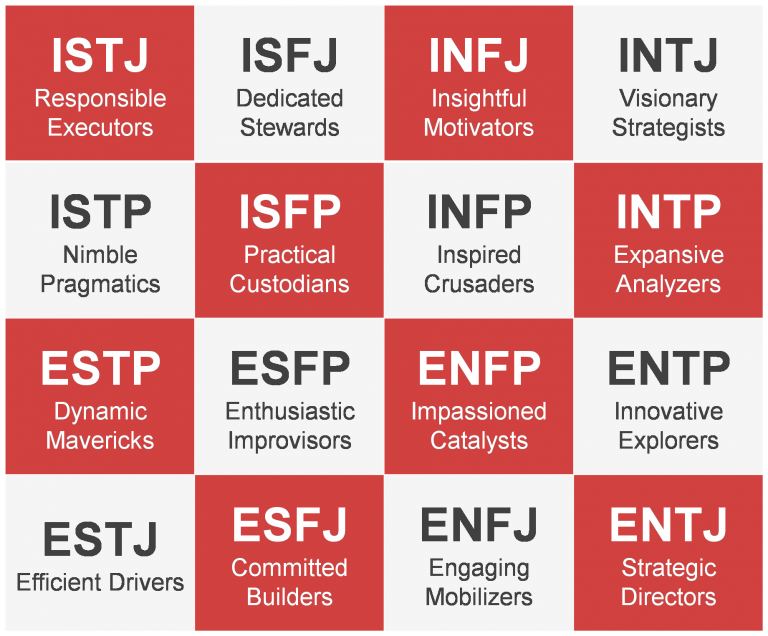
Myers Briggs Type Indicator ® (MBTI) OEC² Solutions LLC OEC²
Core Theory Mind: Intuitive (N) vs. Observant (S) Thought at Every Scale Our second personality scale includes the Intuitive (N) and Observant (S) styles. These traits describe what people are more likely to do with the information gathered from the world around them.
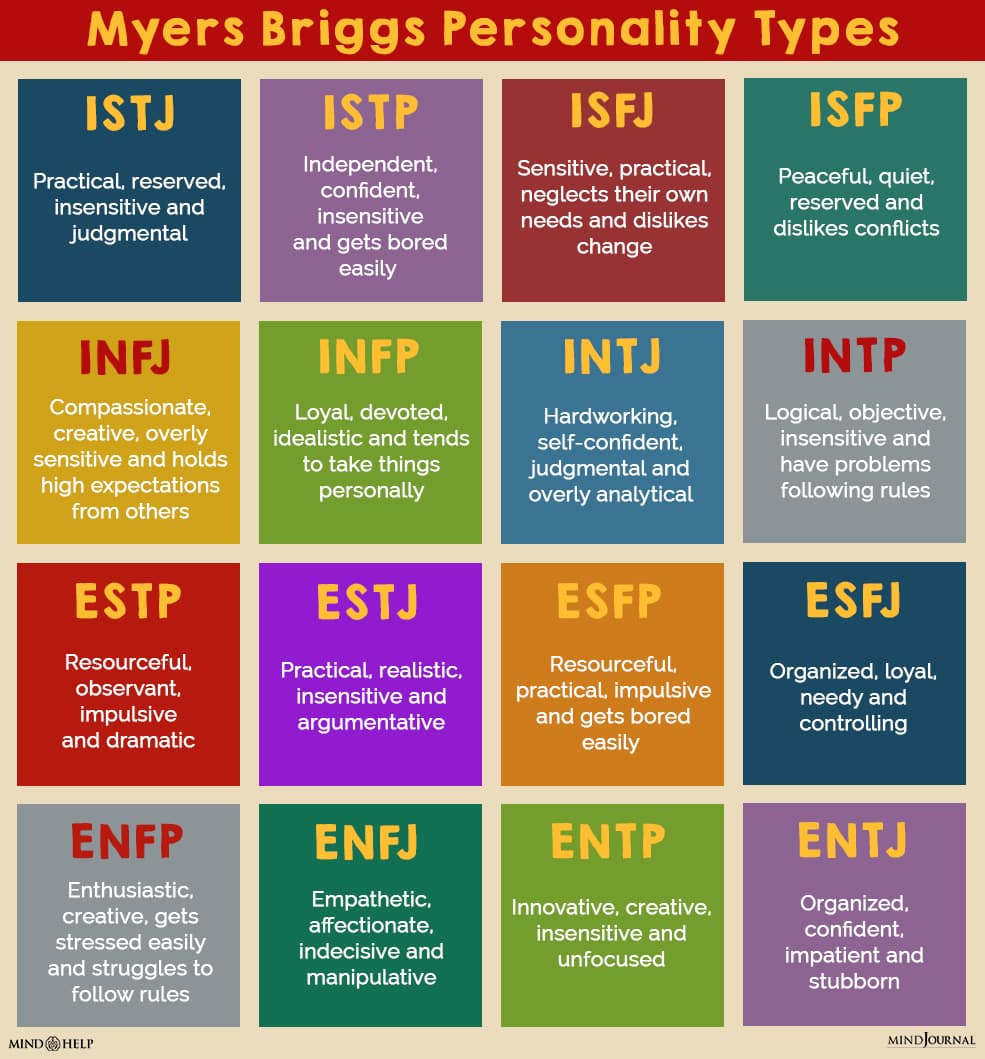
MyersBriggs
The 'N' in Myers-Briggs theory stands for iNtuition. Those with a preference for intuition rely on hunches, future possibilities, implications, and abstract theories. They are often seen as imaginative and innovative, preferring to focus more on what could be rather than what is. People with an 'S' preference prefer Sensing.

How MyersBriggs Influences Communication in Relationships PairedLife
In personality typology, the Myers-Briggs Type Indicator ( MBTI) is an introspective self-report questionnaire indicating differing psychological preferences in how people perceive the world and make decisions. It enjoys popularity despite being widely regarded as pseudoscience by the scientific community.

Absolute Truth. N vs. S MyersBrigg Mbti personality, Infp
In the Myers-Briggs® system, Sensors have an "S" as the second letter of their type code (for example: ESFJ) while Intuitives have an "N" as the second letter of their type code (ENFJ). The Sensing/Intuitive preference is confusing for a lot of people, especially because Intuition is often defined in Western culture as a kind of emotional awareness of how people are feeling (which in.

Sensing vs. Intuition I usually test as an INTP but occasionally get
The MBTI, or Myers-Briggs Type Indicator, is a test that categories people into 1 of 16 personality types which are based on 4 dimensions: introversion (I) or extroversion (E), sensing (S) or intuition (N), thinking (T) or feeling (F), and judging (J) or perceiving (P). Both sensing and intuition relate to how you absorb and process information.

MBTI explained Personality types chart, Myers briggs personality
One of the primary dichotomies in the Jungian personality taxonomy is intuition (N) vs. sensing (S). It is sometimes cast as a preference for the "big picture" (N) vs. details (S), theory (N) vs. practice (S), or abstract (N) vs. concrete (S) matters.

How the MyersBriggs Type Indicator Works 16 Personality Types
In Myers & Briggs' personality typing, the Sensing/Intuition dichotomy describes how a person takes in information, whether through sensory-based experiences or by intuitively recognizing factual patterns and connections. Find your type
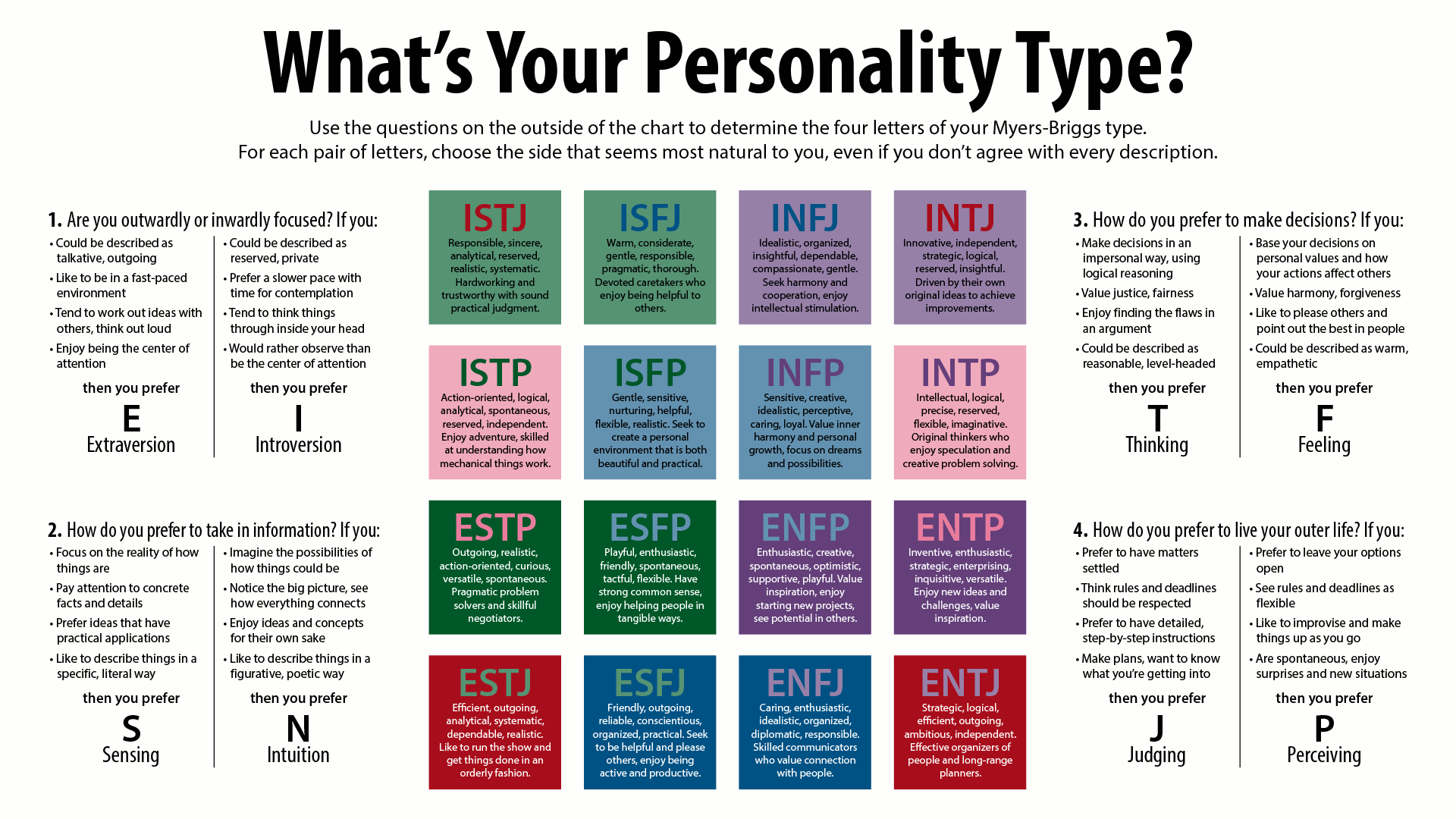
FileMyersBriggsTypes.png Wikipedia
The Development of the Myers-Briggs Test. The MBTI tool was developed by Isabel Briggs Myers and her mother Katharine Cook Briggs in 1942 and is based on psychological conceptual theories proposed by Swiss psychiatrist Carl Jung in his work, Psychological Types.. Jung's theory of psychological types was based on the existence of four essential psychological functions - judging functions.
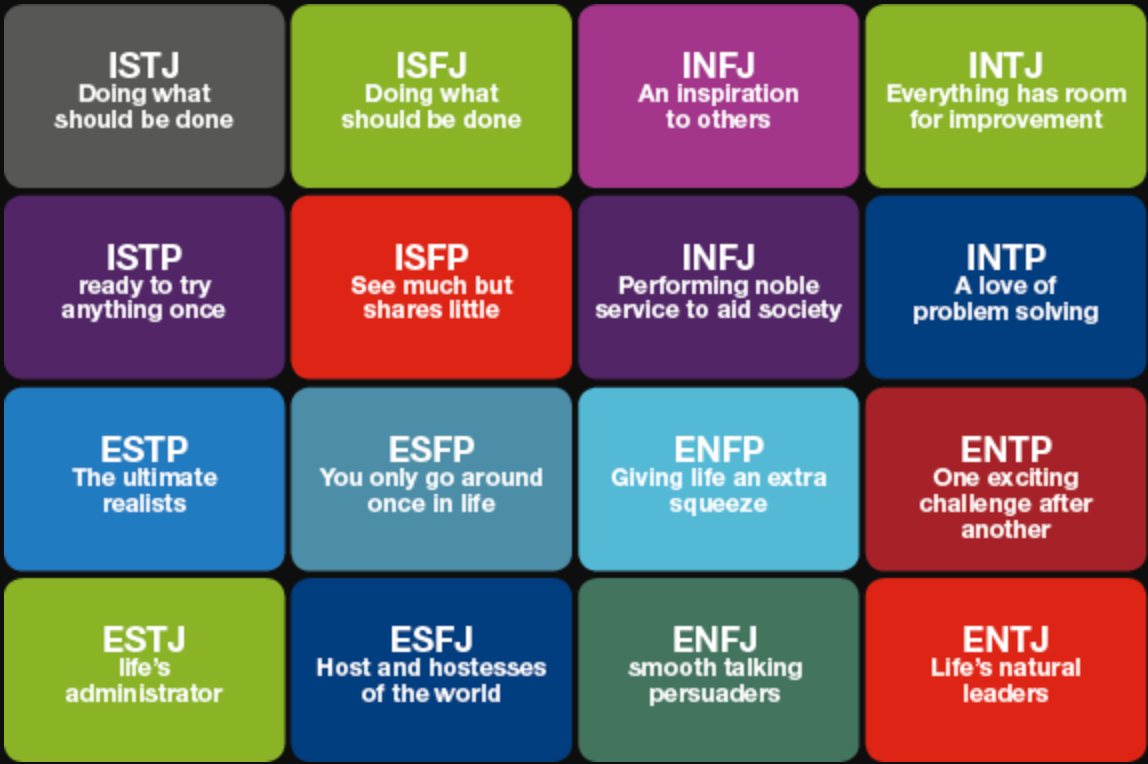
MeyersBriggs Classification Models by Alex S Analytics Vidhya Medium
1. The 9 vs 16 type system To categorize and describe different personalities, both the Myers and Briggs system and Enneagram use 'types' or categories. Myers and Briggs has 16 possible personality types, resulting from four opposing personality functions, also called dichotomies, preferences or scales.
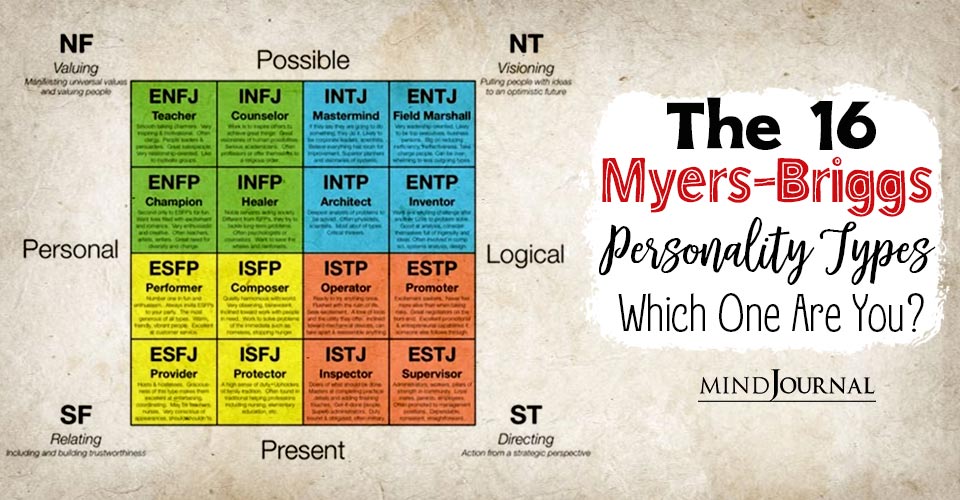
16 MyersBriggs Personality Types Which MBTI Personality Are You
The second letter of the MBTI test, Sensing (S) and Intuition (N) is how you process information. Someone who is strong in sensing lives in the now and enjoys facts. While being Intuitive means you try and find the deeper meaning in things. As always, the MBTI test is a very skin-deep test and does not tell you everything about a person.
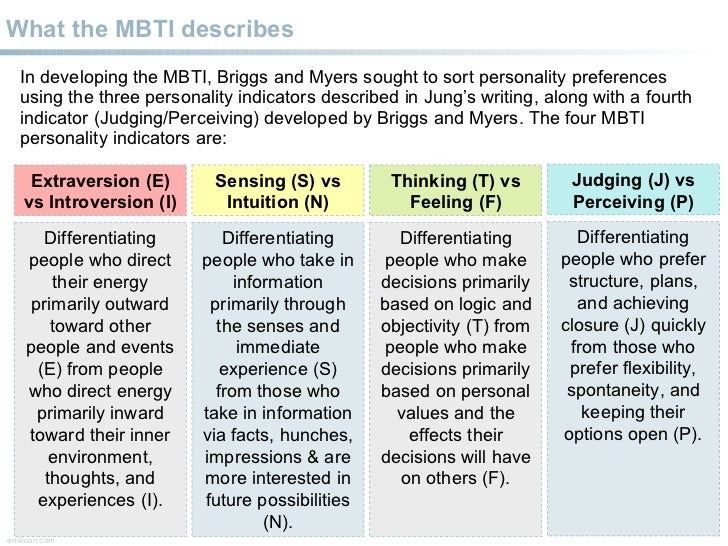
MyersBriggs Type Indicators Overview
Do you prefer to focus on facts and details or patterns and possibilities? This is the question that the Sensing or Intuition preference pair of the MBTI personality type helps you answer. Learn more about how these two ways of perceiving the world affect your behavior and communication.
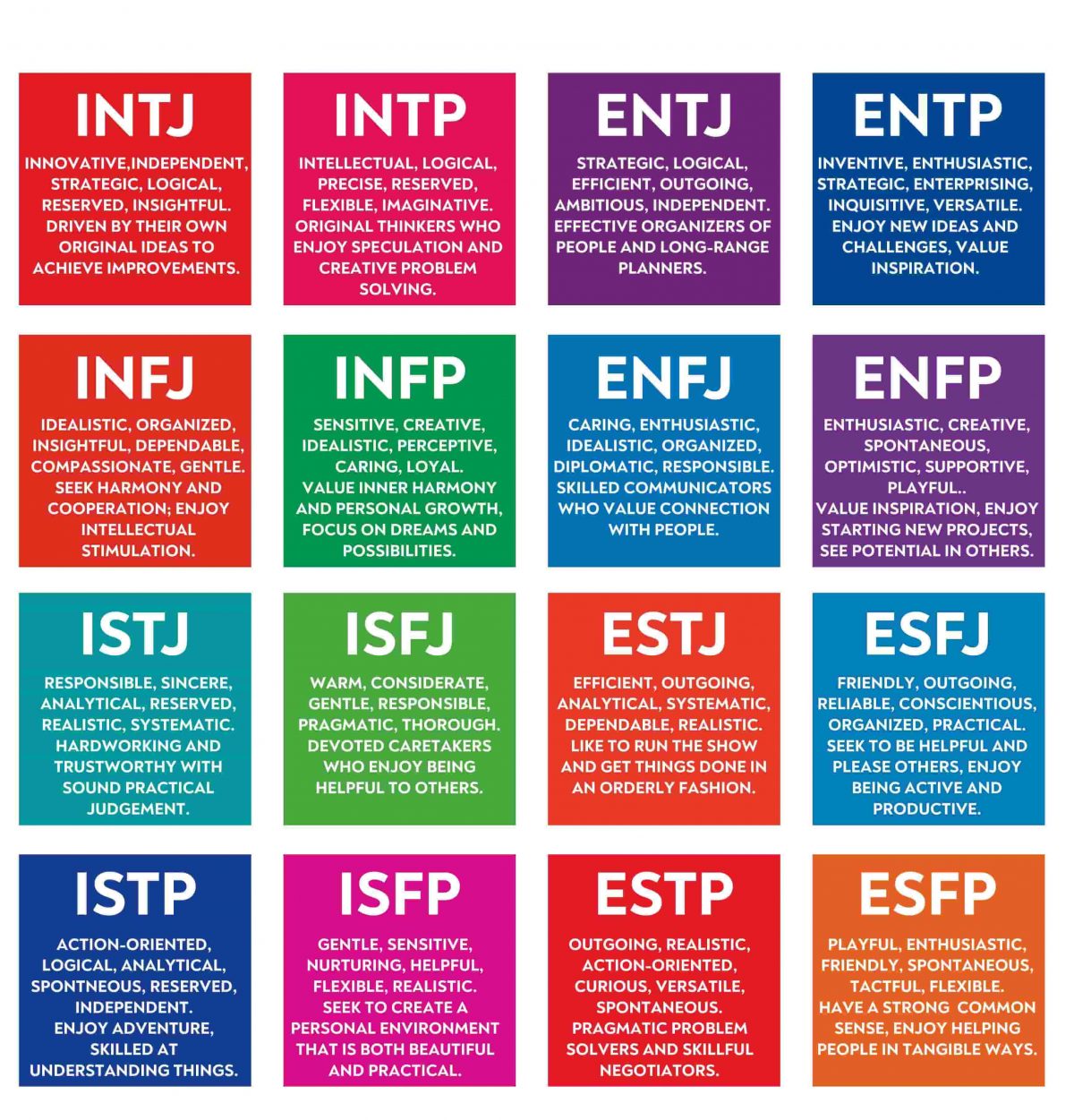
Myers Briggs Personality Test Let’s Explore Your Personality Type!
The S vs. N dimension indicates how one identifies, interprets and relates to data, which in turn can influence transition behavior. Sensors tend to be detail-oriented and linear, valuing facts and historical precedents. Intuitors are more likely to interact with data in a less-structured way, often thinking about the future more creatively and.

MyersBriggs Type Indicator (MBTI) Overview LEADx
According to the Myers-Briggs, intuitives are inclined toward abstract processing and activities, whereas sensing (S) types are said to be oriented to the concrete. This distinction has been crudely summarized as being "book smart" (i.e., academic) vs. "street smart" (i.e., using common sense). One thing that's given me pause about.
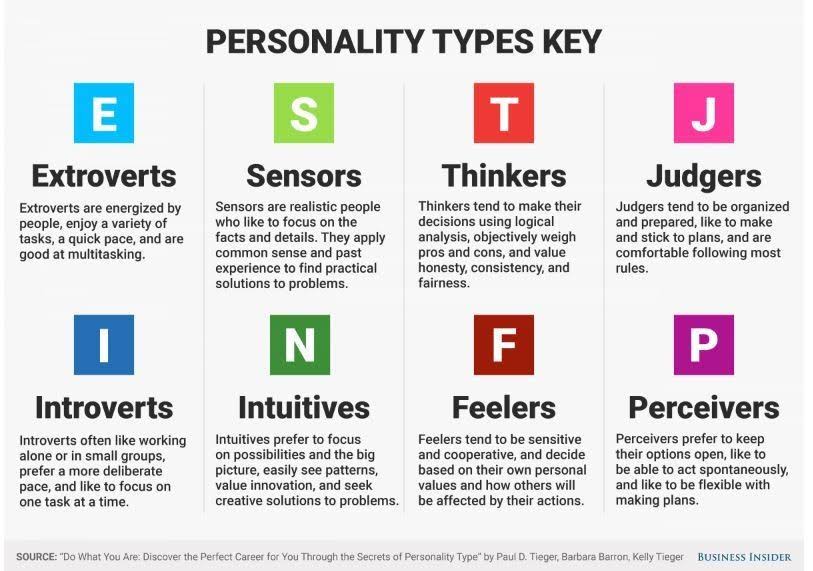
MyersBriggs Type Indicator (MBTI) LET'S THINK ABOUT IT
The Myers-Briggs Personality Type Indicator is a self-report inventory designed to identify a person's personality type, strengths, and preferences. The questionnaire was developed by Isabel Myers and her mother Katherine Briggs based on their work with Carl Jung's theory of personality types.

N types Personality types, Personality psychology, Personality
Personality type is more complex and far richer than most people know. MBTI ® type is more than just the sum of four preferences; it is a dynamic, interrelated system of personality.. Myers's creation of the 16 MBTI personality types is ingenious. Within the four-letter MBTI type exists a code, a formula that is a shorthand way of telling you about the interaction of your four preferences.
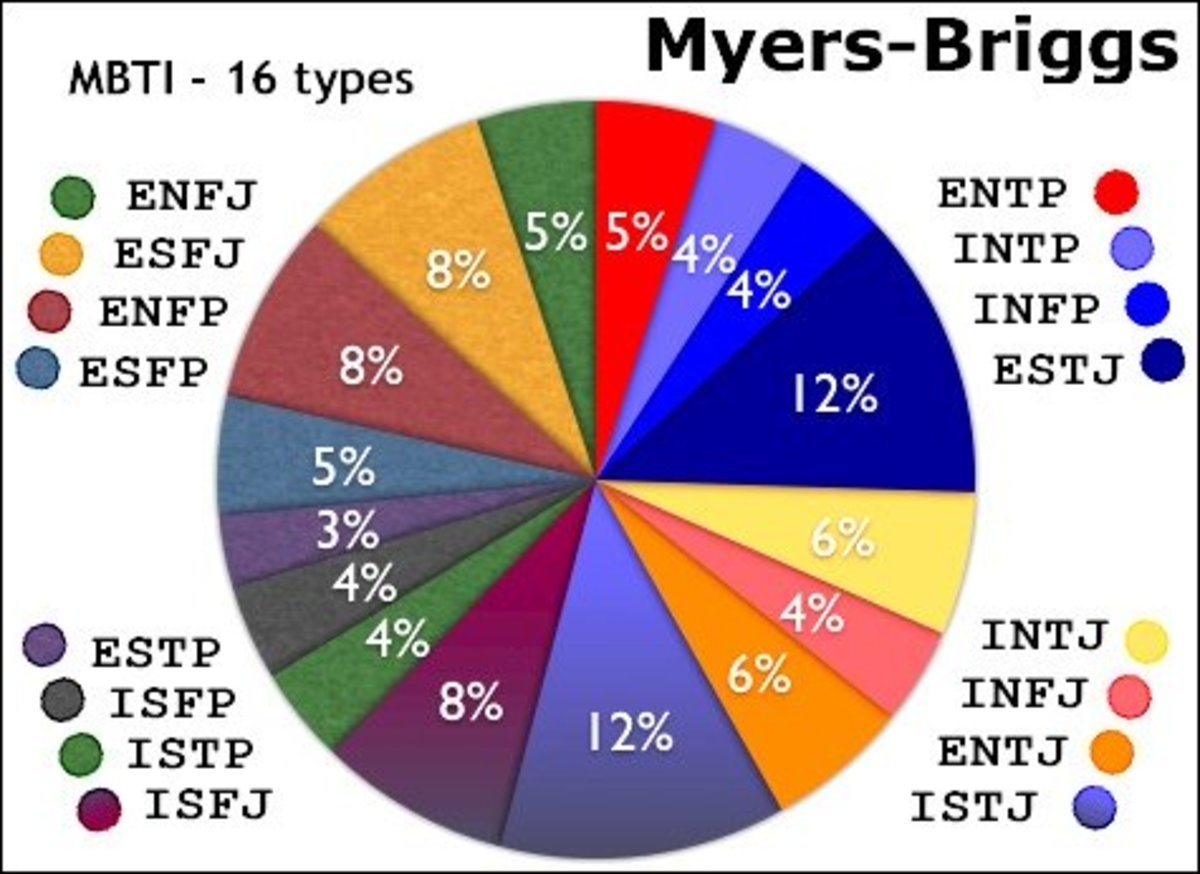
The History and Significance of the MyersBriggs Personality Test
IamBili. •. Usually, distinguish S from N is the hardest MBTI personality trait you can do, as the environments and the "friendship networks", where you know the person can skew from one trait or another, and it is possible that the "S/N balance" isn't so tipped for one than it is for another. If you can factor these things, then I guess one.